備前焼
BIZEN WARE

備前焼は、岡山県備前市伊部地区周辺を産地とする焼き物です。 釉薬を一切使用せず昼夜問わず松割木で 七日から十四日間窯を焚き続けるため 炎、灰の流れによって自然な風合いが生まれ 二つとして同じものがありません。約千年の歴史があり、二〇一七年に日本遺産に認定されました。
備前焼の土は、きめが細かく無数の微細な気孔があり水や食物を新鮮に保ちます。花を生けたり料理を盛ったり使えば使うほど器が育ちまた 酒類は味がまろやかになるなど日常使いに楽しんでいただけます。時が経っても変わらない備前焼の魅力を感じていただけたらと思います。
Bizen ware is one of the most famous forms of pottery in all of Japan. It has a history dating back over 1,000 years. The practice of Bizen ware was declared a part of Japanese Heritage in 2017. It is pottery produced without any glaze. This pottery is fired with pine wood in a kiln for 7 to 14 consecutive days. Many factors such as ash, fire and positioning give Bizen ware unique patterns and colors; no two products will ever look the same. Bizen ware is valued for its aesthetic charm, as well as its practicality.
Bizen ware is durable, and many locals believe it can improve water quality and preserve freshness. Because Bizen ware has pores and a fine iron content, it can be used for keeping plants or even as a cup to drink from. The head on beer will last longer, and flowers tend to stay alive longer. Bizen ware also helps retain the temperature of its contents longer.
The color of Bizen ware is said to change over time. Many believe this makes it a rather beautiful utensil, adapting with its owner throughout its lifetime.
備前焼が
できるまで
How to Make
Bizen Ware
採土
Finding the clay
1
備前焼に使われる土は伊部地区の地下から採掘されます。その土は田土(ヒヨセ)と呼ばれ、山から流れ出たもので非常にきめが細かく、粘り気があり鉄分を多く含んでいます。ヒヨセはすべての地中にあるわけでなく、現在では大変貴重な土です。採掘した土は数年寝かせてから使えるようになります。
Bizen ware is made from Hiyose, a very rare clay found exclusively in the area of Imbe, Bizen City. This clay contains trace amounts of iron and is smooth and sticky to the touch, which are perfect qualities for Bizen ware. The clay has become increasingly rare to find, so any excess clay dug up has to be stored carefully for future use.
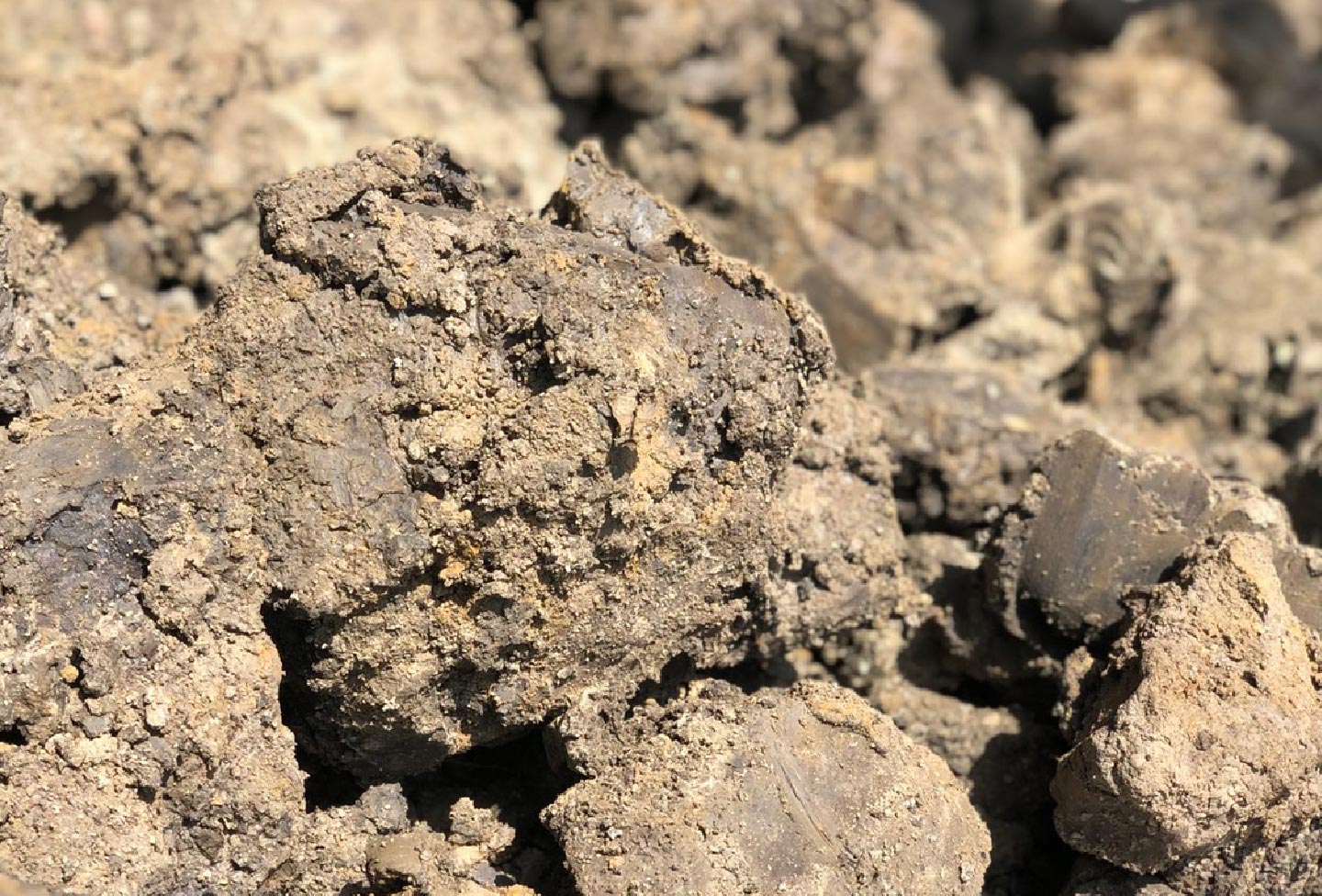
土作り
Clay forming process
2
土は品質別に仕分けされ、一晩水につけます。その後、約一週間ドベ鉢と呼ばれる素焼きの鉢に入れて水分を抜きます。水分を抜くことで粘り気が出て成形がしやすくなります。水分がほどよく抜けた土に含まれる小石や不純物を取り除きます。この作業は全て手作業で行われ作品の品質に関わる重要な工程になります。
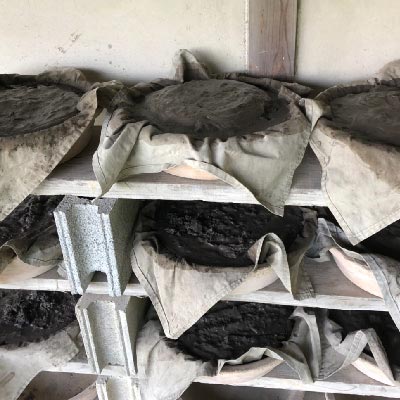
Every single bit of the clay is meticulously hand-sorted based on quality. The clay is then left to soak in water overnight. Then it is drained of all excess fluids in another container known as a ‘Dobe Bachi’, for roughly 1 week. This process makes the clay moist and sticky, and therefore easier to knead and mold.

菊練り
Kikuneri
3
菊練りは菊の花に似た形に練ることから菊練りと呼ばれます。この工程では土に含まれる空気を抜くとともに土全体を均一な硬さにしていきます。
This kneading technique is named after a kiku flower, or Chrysanthemum. The clay is kneaded into a shape closely resembling the flower, removing any air trapped within. This technique is rather difficult. It can take many years to master.

成形
Forming
4
轆轤(ロクロ)で成形後、作品を半乾燥させ、底や全体を仕上げていきます。乾燥は作品のサイズによって異なり一週間から一ヵ月ほどかかります。備前焼は成形後、乾燥と窯焚きを経て、二割ほど縮みます。
Once the wheel throwing process is done (the process of forming the pottery on the pottery wheel), each piece is prepared for trimming, a process where the Bizen ware is cut from underneath to give it a smooth and flat underside. The Bizen ware is then left to dry completely and rest, anywhere from a week to a month, depending on the size and shape of each product. During this process, Bizen ware may shrink up to 20% in size.
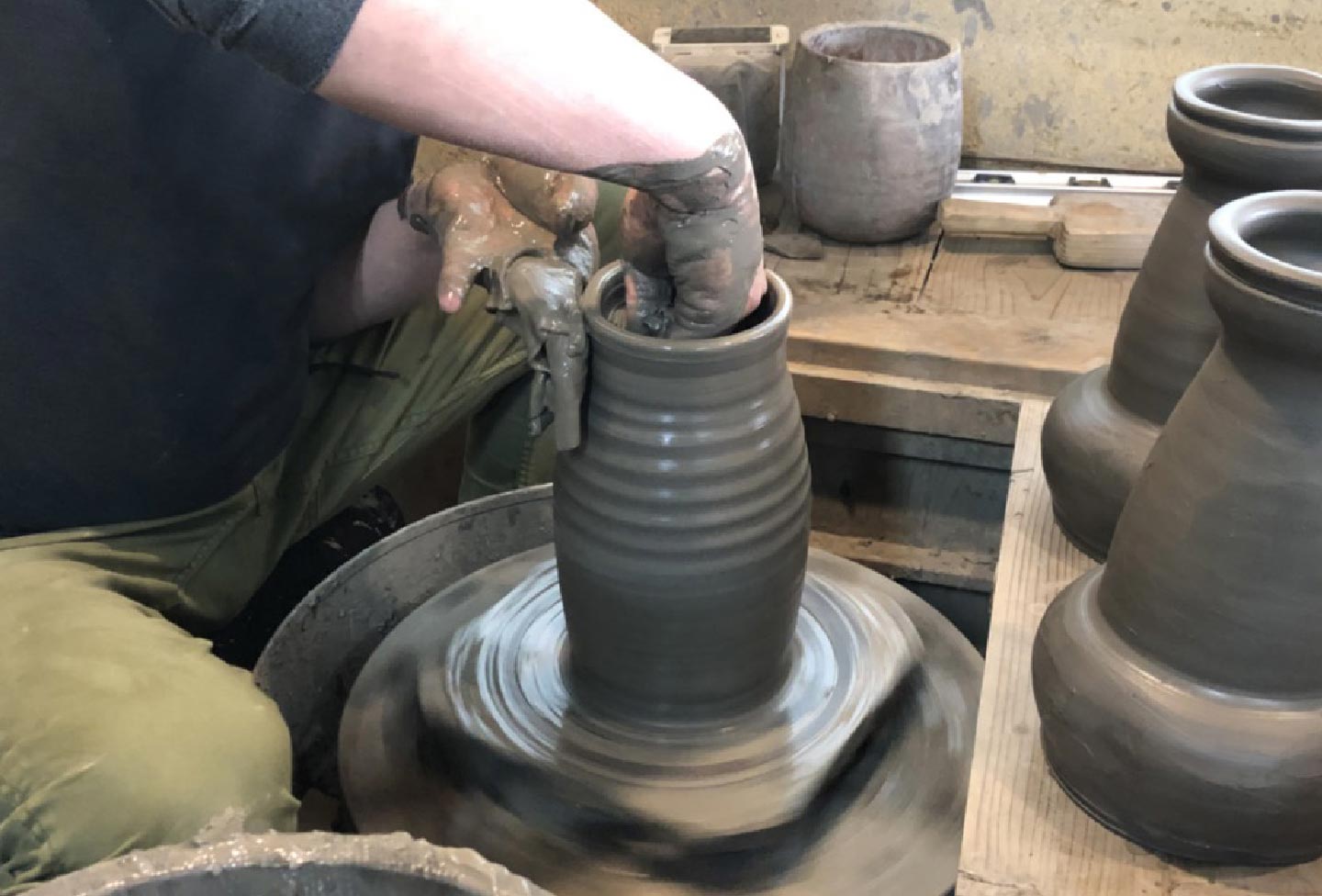
窯詰め
Loading
5
登り窯と呼ばれる窯に作品を詰めていきます。置く場所によって模様や色合いが決まるため備前焼を作る工程で一番大切な作業になります。
This is the most crucial part of making Bizen ware. All of the Bizen ware is now finally ready to be loaded into the kiln. This massive oven spans approximately 10 meters long, with numerous chambers within it. The position of each Bizen ware determines its color and patterning, among other techniques and products (please refer to the Bizen ware Techniques on this brochure). This has to be done right, otherwise the pottery will not come out as desired. The kiln can hold up to 3,000 unique pieces of pottery.
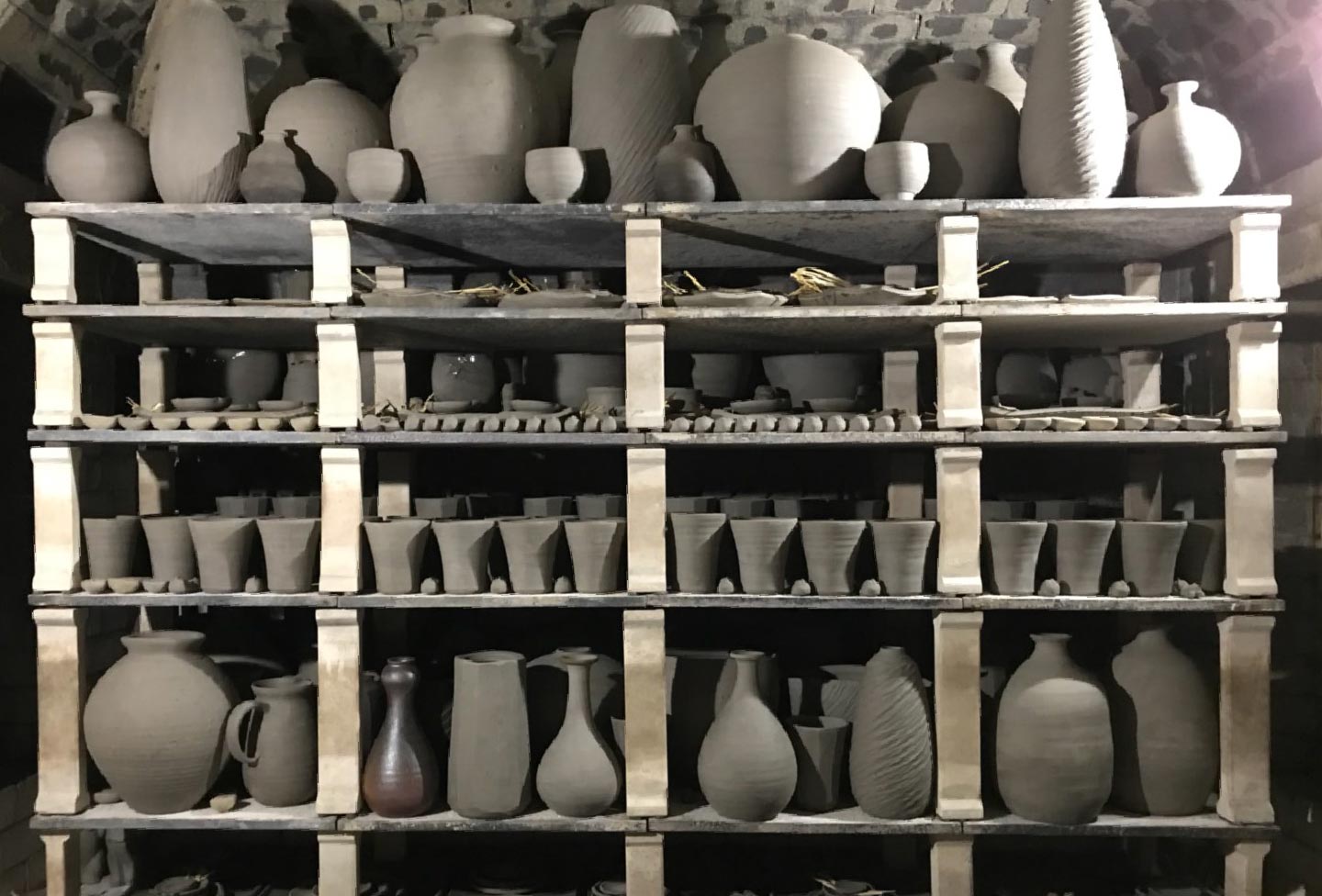
窯焚き
Firing
6
赤松の割木を使って窯の温度を一二五〇度まで上げていきます。約二週間かけて一時間に約五度ずつ上げていきます。窯が焚きあがったら自然に一週間から一〇日かけてゆっくり冷まします。土作りから成型まで、すべて手作業で行うため窯焚きは年に一回から二回程度しかできません。
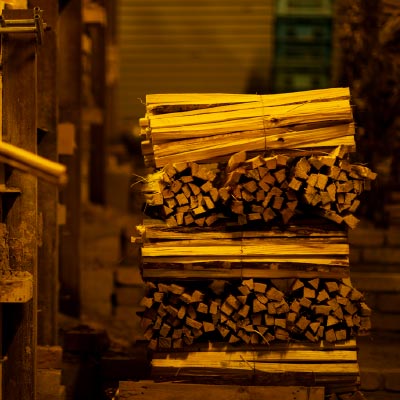
Using pine wood, the kiln is fired up. The temperature is raised by 5 degrees celsius every hour, until it reached a whopping 1,250 degrees celsius! It will take approximately 2 weeks for it to reach this temperature. After this point, the kiln is given 7 to 10 days to cool down naturally. Due to the sheer volume produced, and to ensure top quality product, this entire process is done twice a year.
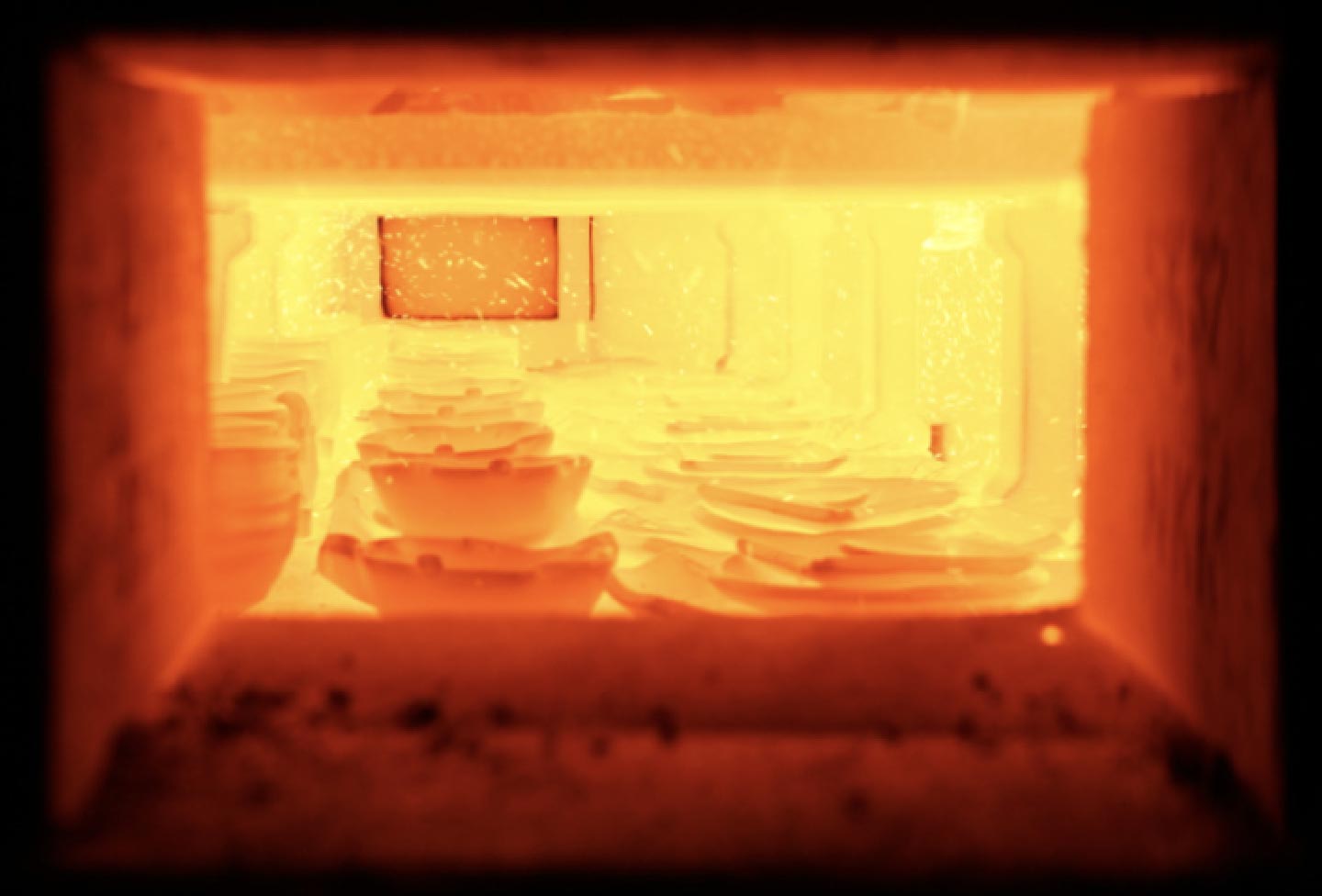
窯出し
Unloading
7
窯から出た作品は一点ずつ作品を磨き水漏れチェックをして完成です。
The kiln is very carefully unloaded, and sanded down until smooth. Each piece is then filled with water, checking for any leaks or holes.
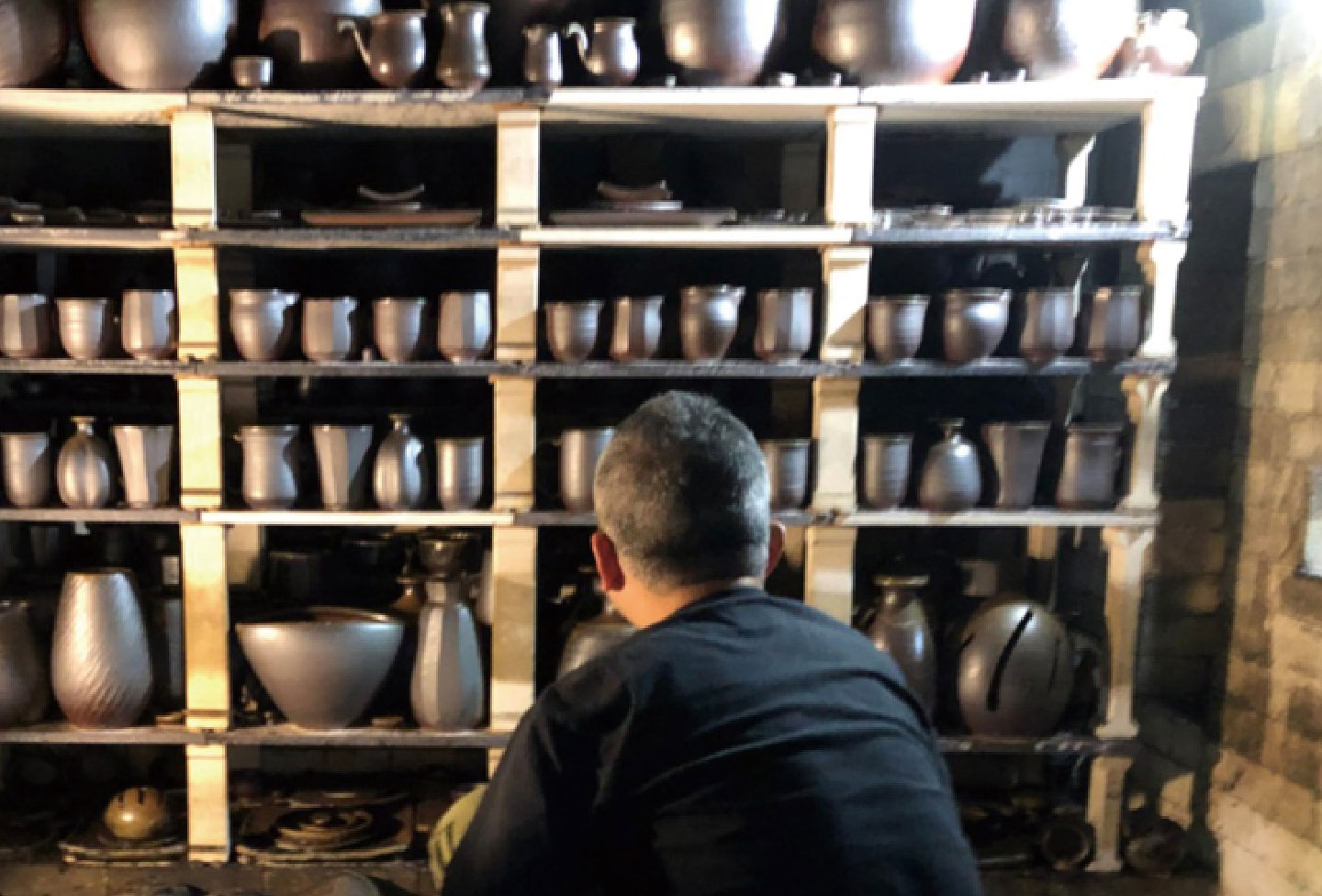
備前焼の景色
Bizen Ware Techniques
窯変
Yohen
作品を窯の火前の床に寝かせて焼くことで窯変が生まれます。割木が燃えてできた灰が作品を覆うことで窯変が現れます。一度に焼かれる数が限られるのでとても貴重です。
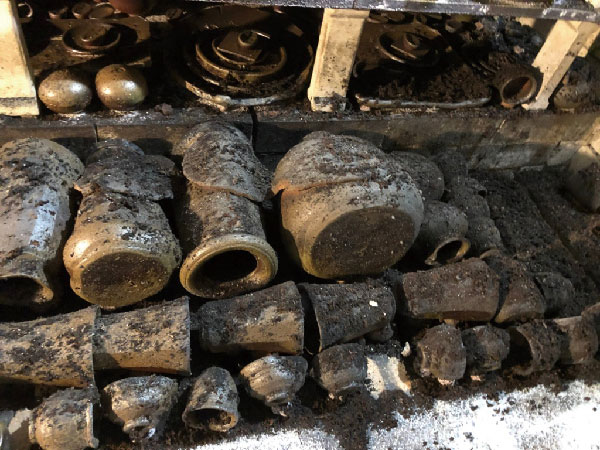
These are placed on the floor of the kiln, sideways. Ash from the burning wood covers the ware, protecting it from direct flames. This gives it a very unique pattern. A very limited amount can be made at one time due to their size and available room in the kiln.
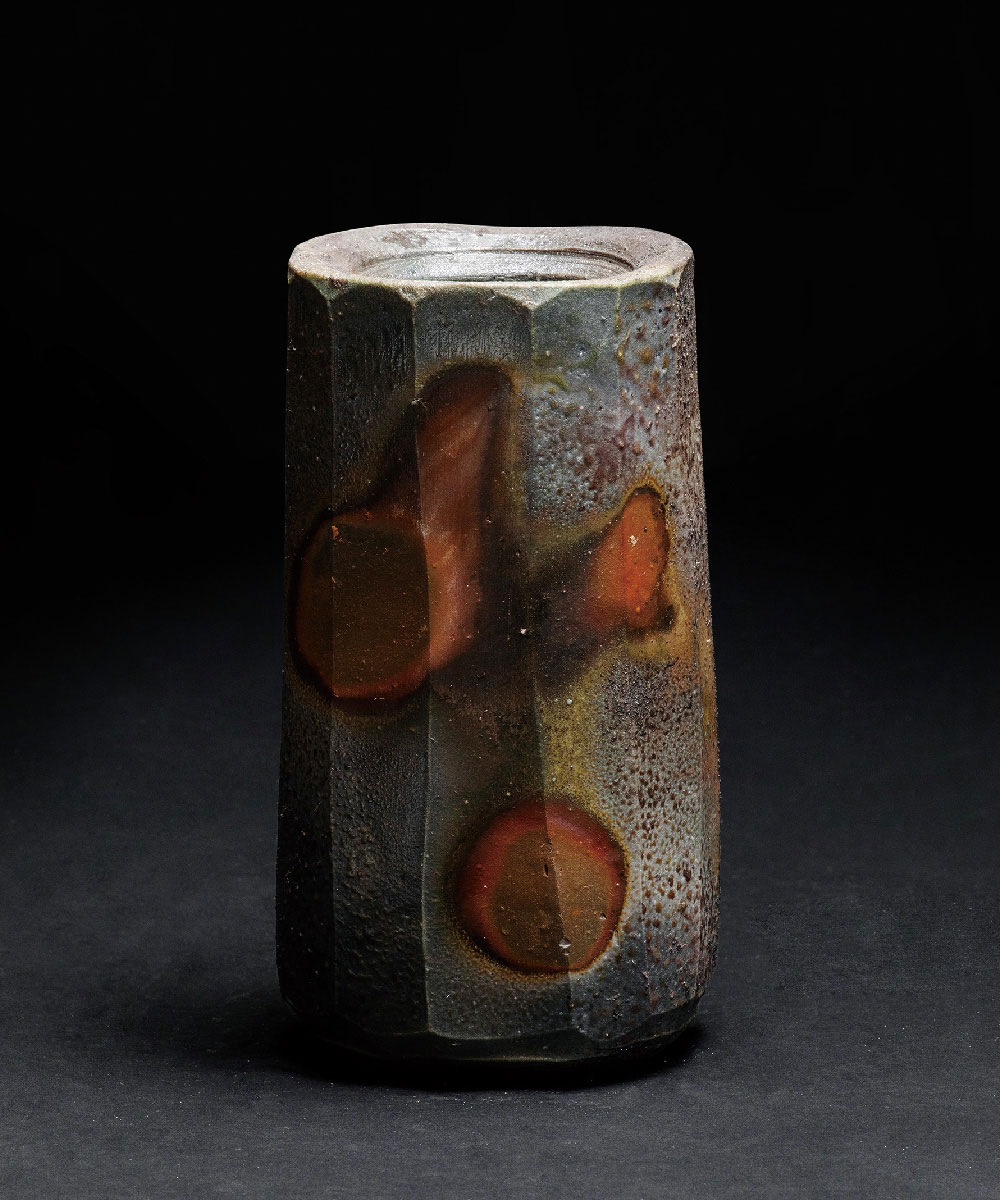
棧切
Sangiri
窯焚き中に作品の周りに炭を置く事で化学反応が起きてこのような景色ができます。
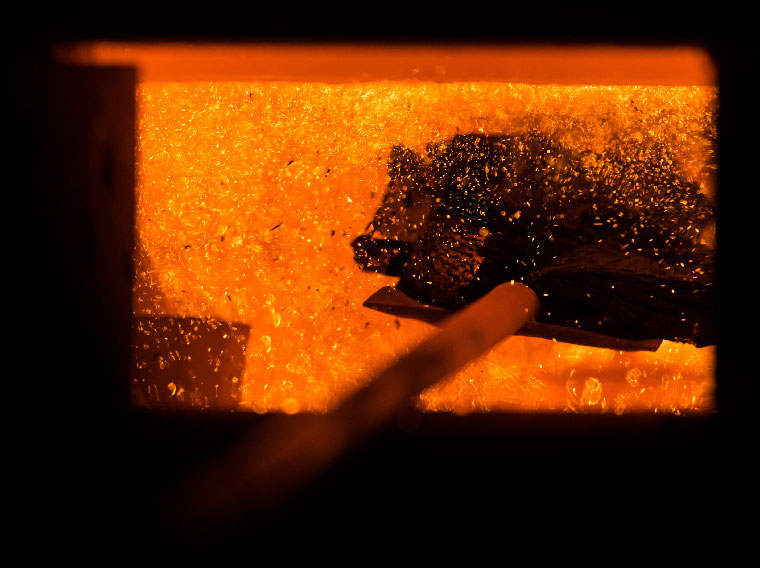
This piece is formed when charcoal is placed around it during firing. This causes a chemicalreaction, as seen from the multi-colored carbon gases during firing, giving the wares it’s unique color.
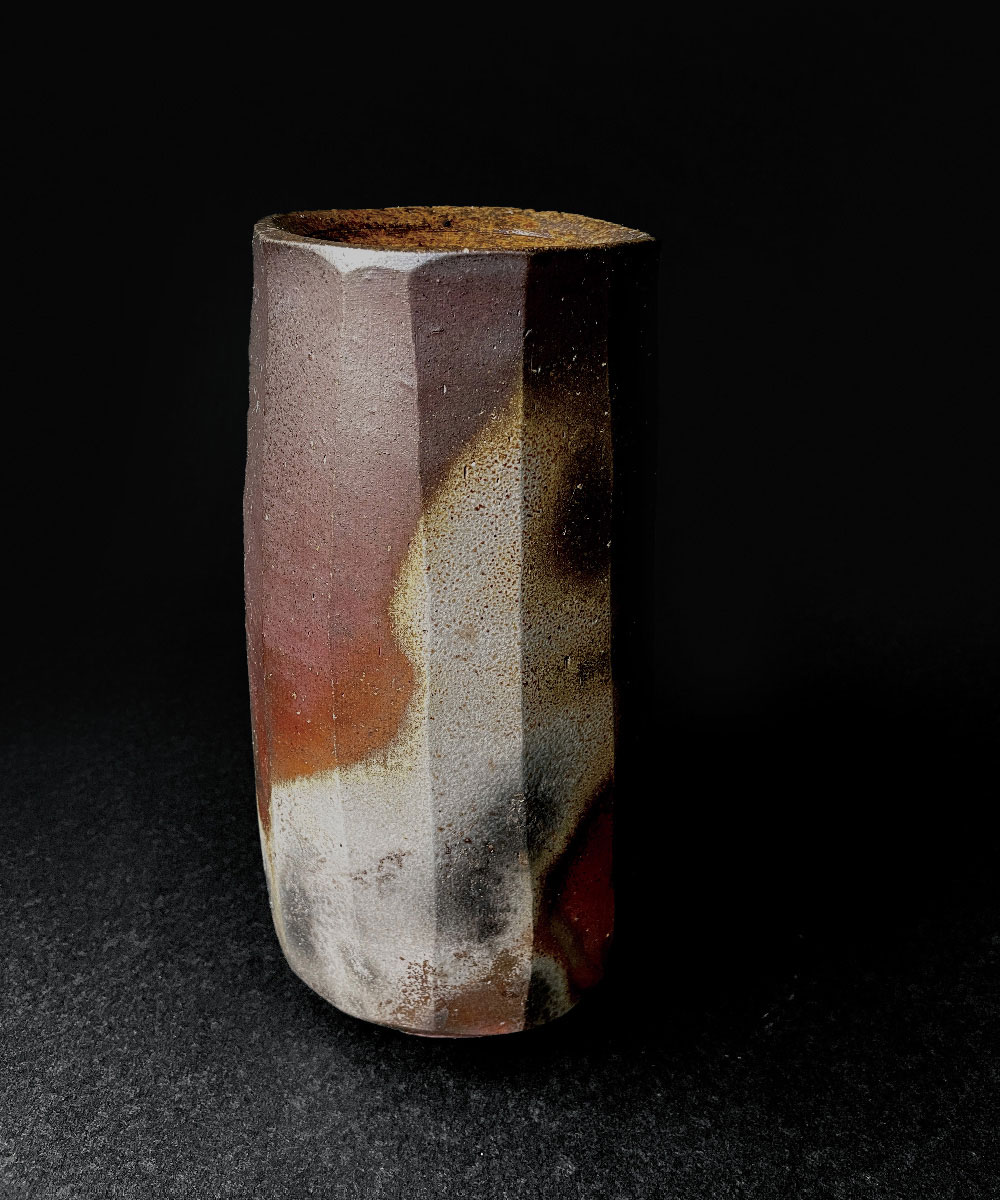
ぼた餅
Botamochi
ぼた餅は主に皿などに見られる景色の一つです。窯をを詰める際に作品の上に他の器などを置いて窯に詰めます。
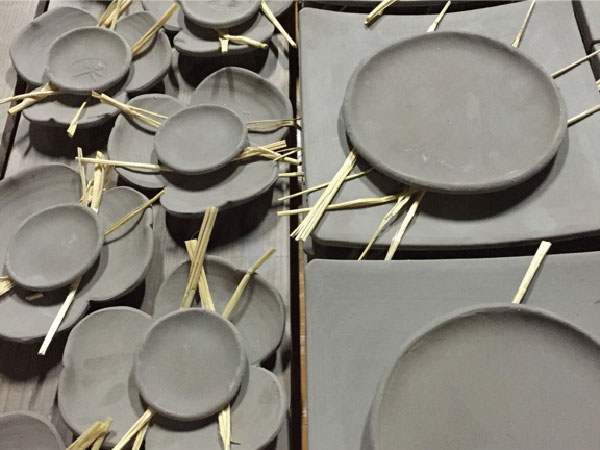
This piece is typically a plate. Its pattern is formed by placing special round plates on top of it during firing. This leaves a circular pattern due to less exposure to direct heat. The colors often vary depending on the clay and positioning within the kiln.
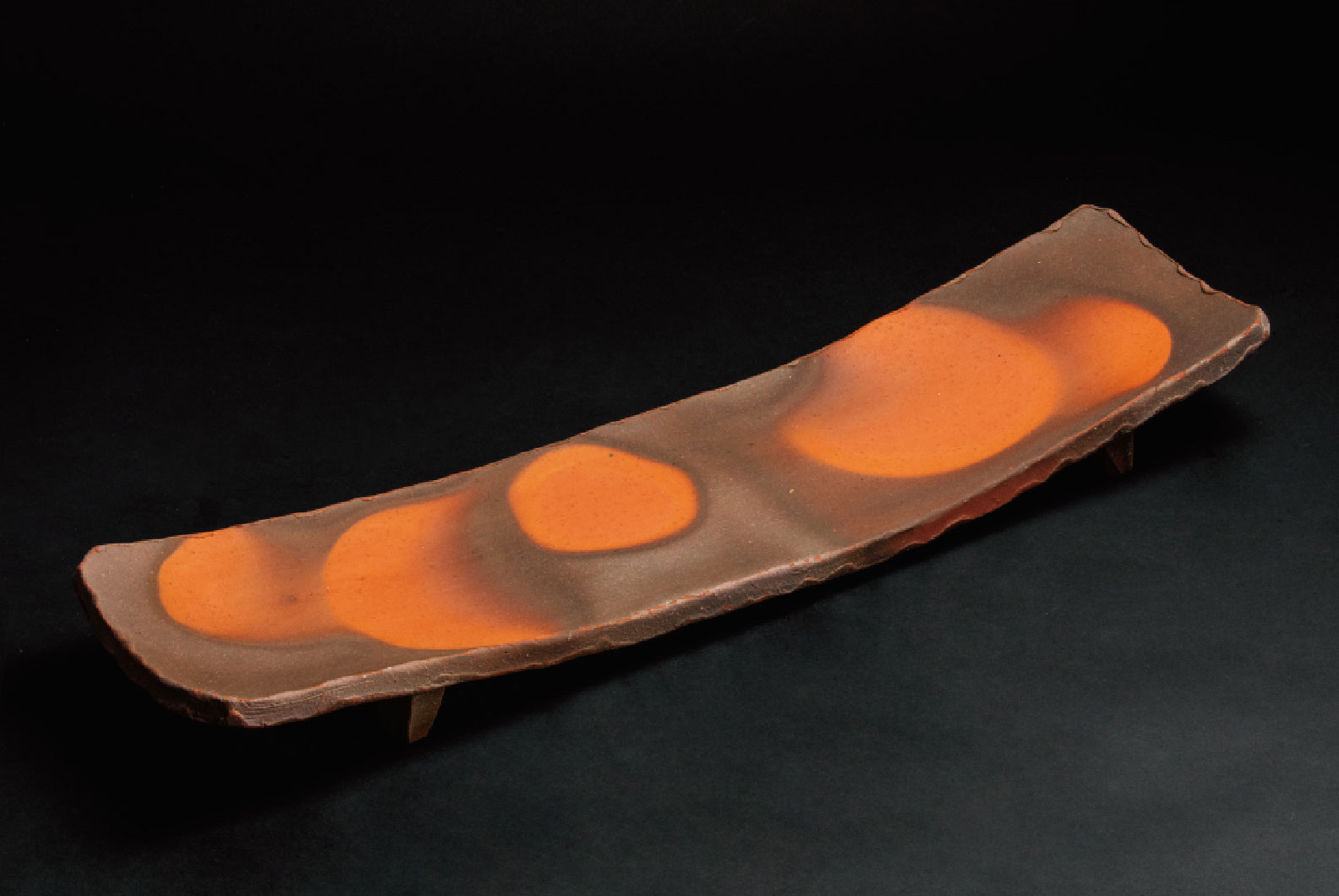
胡麻
Goma
作品の表面に付着した灰が溶け、ごまをふりかけたような景色になります。また、灰が熱で溶けて流れた状態のものを玉だれといいます。
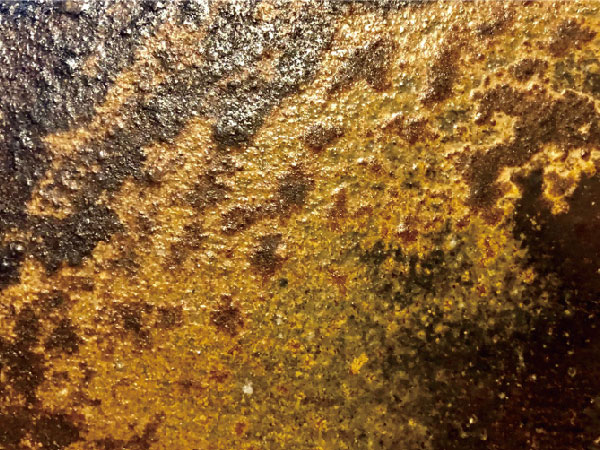
This pattern is made when the kiln is fired at the highest temperature. Ash melts and drips down the sides of the ware. This process is referred to as Tamadare.
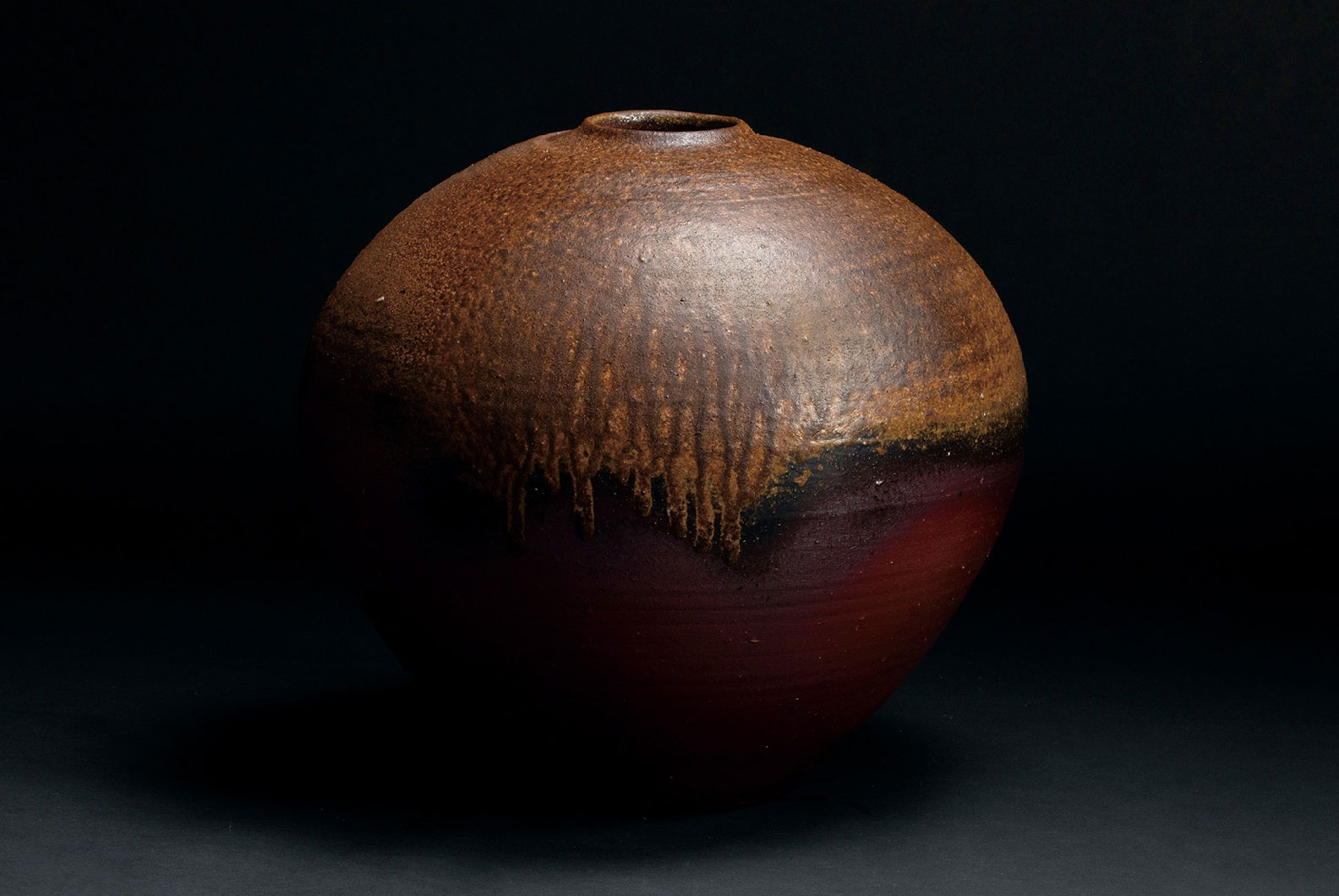
緋襷
Hidasuki
作品を窯に入れる前に藁を巻きつけ、サヤと呼ばれる入れ物に入れ蓋をし、直接火や煙が当たらないようにして焼きます。その時に藁に含まれる成分と土に含まれる鉄分が反応して鮮やかな緋色になります。
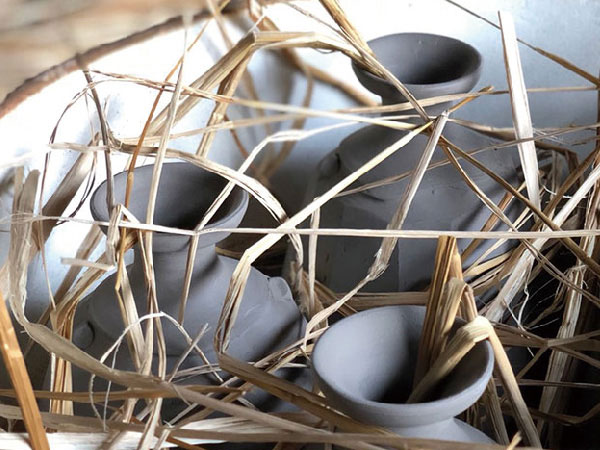
Scarlet lines are formed around the piece by wrapping rice straw around it before firing. The pottery themselves are protected from direct heat by being placed inside a box, known as a saggar. This causes the ware to become pale, while the scarlet lines are formed from the rice straw.

陶壁
Wall Art
陶壁は同じ土から一つ一つ手作業で作られています。釉薬を使わずそのまま焼いたもので、炎、灰の流れによって自然な風合いが生まれて様々な色と柄が作り出されます。
This wall art was made using the same clay. Each square was individually handmade. The colours and patterns are influenced by where it was fired in the kiln, as well as other factors such as ash.
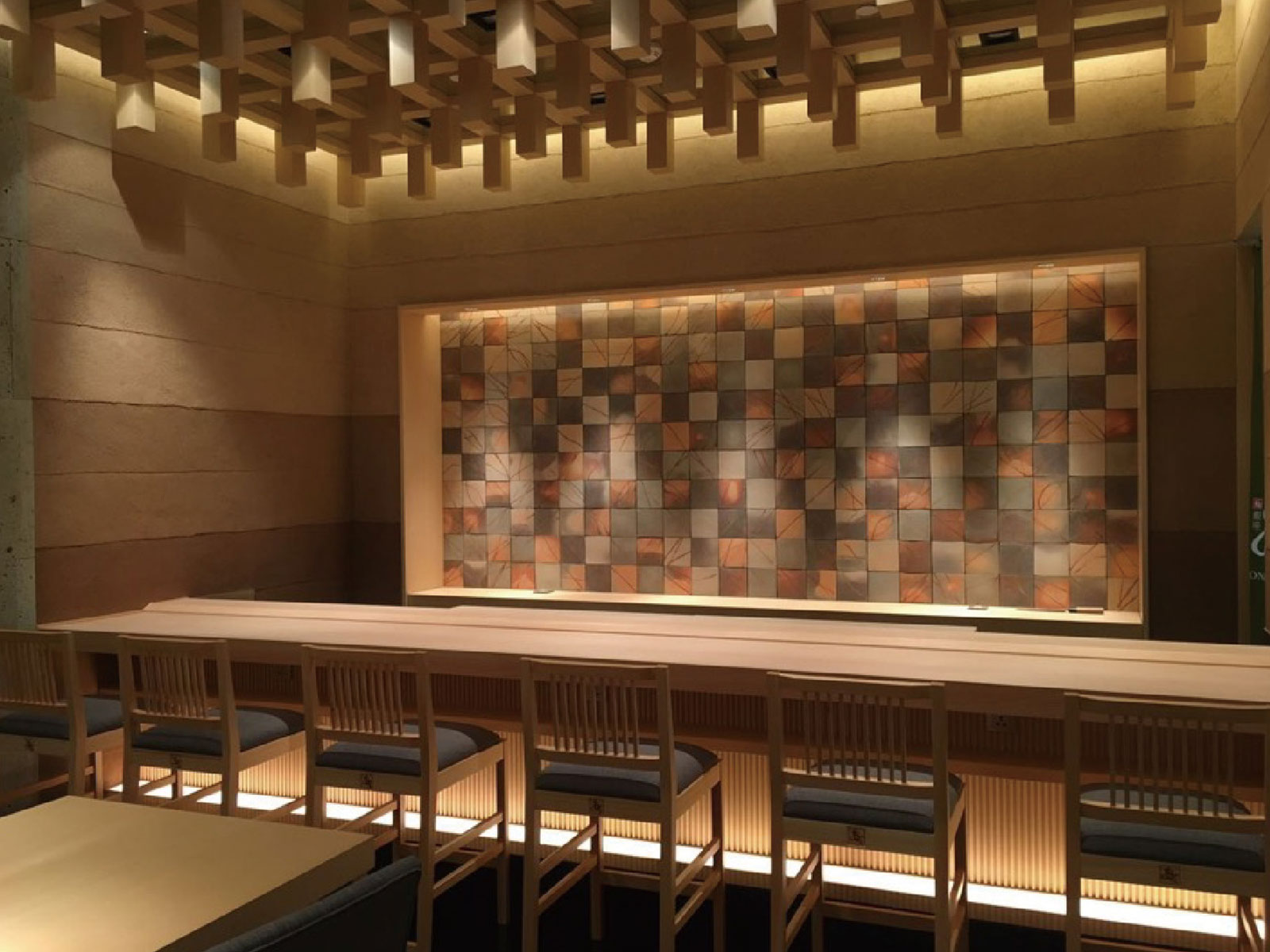 Shanghai
Shanghai
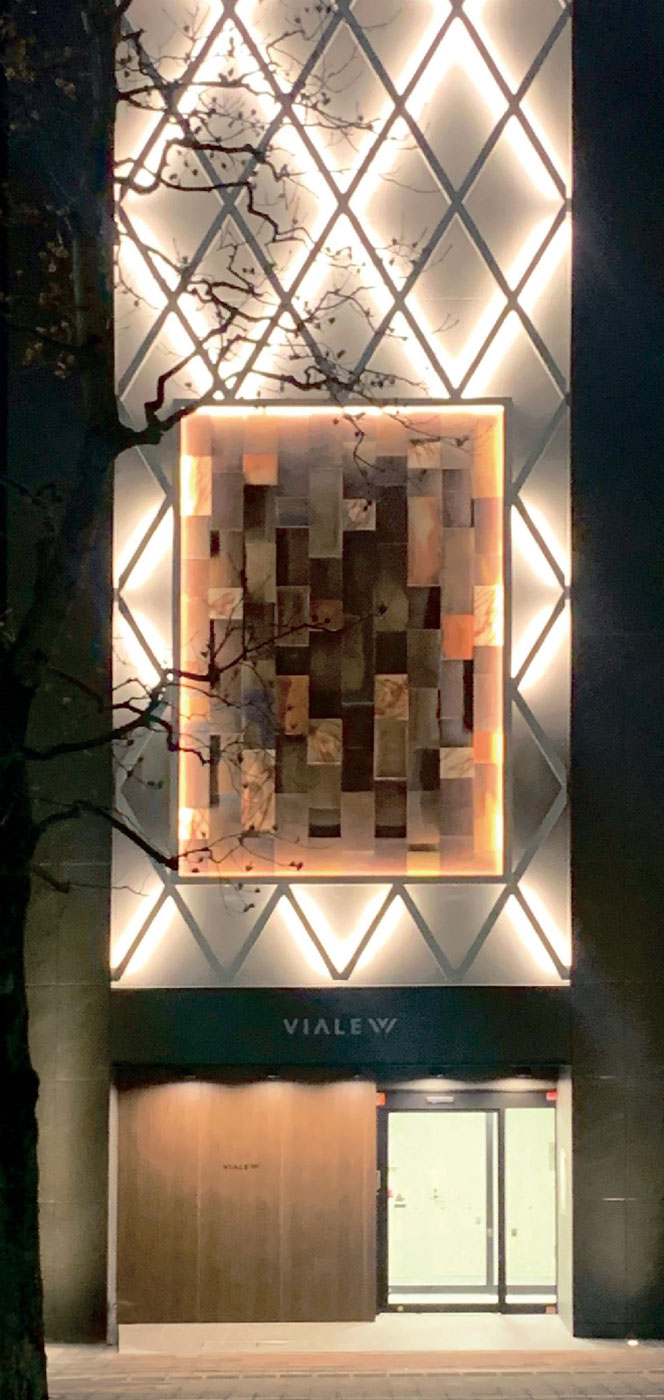 Okayama
Okayama
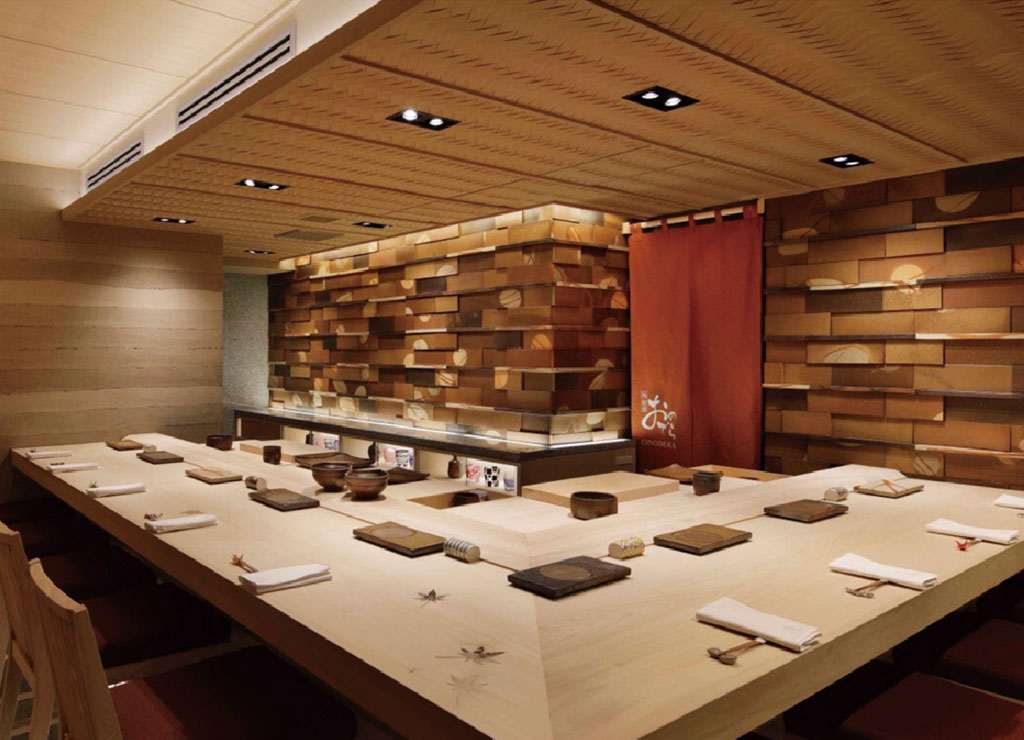 Ginza
Ginza
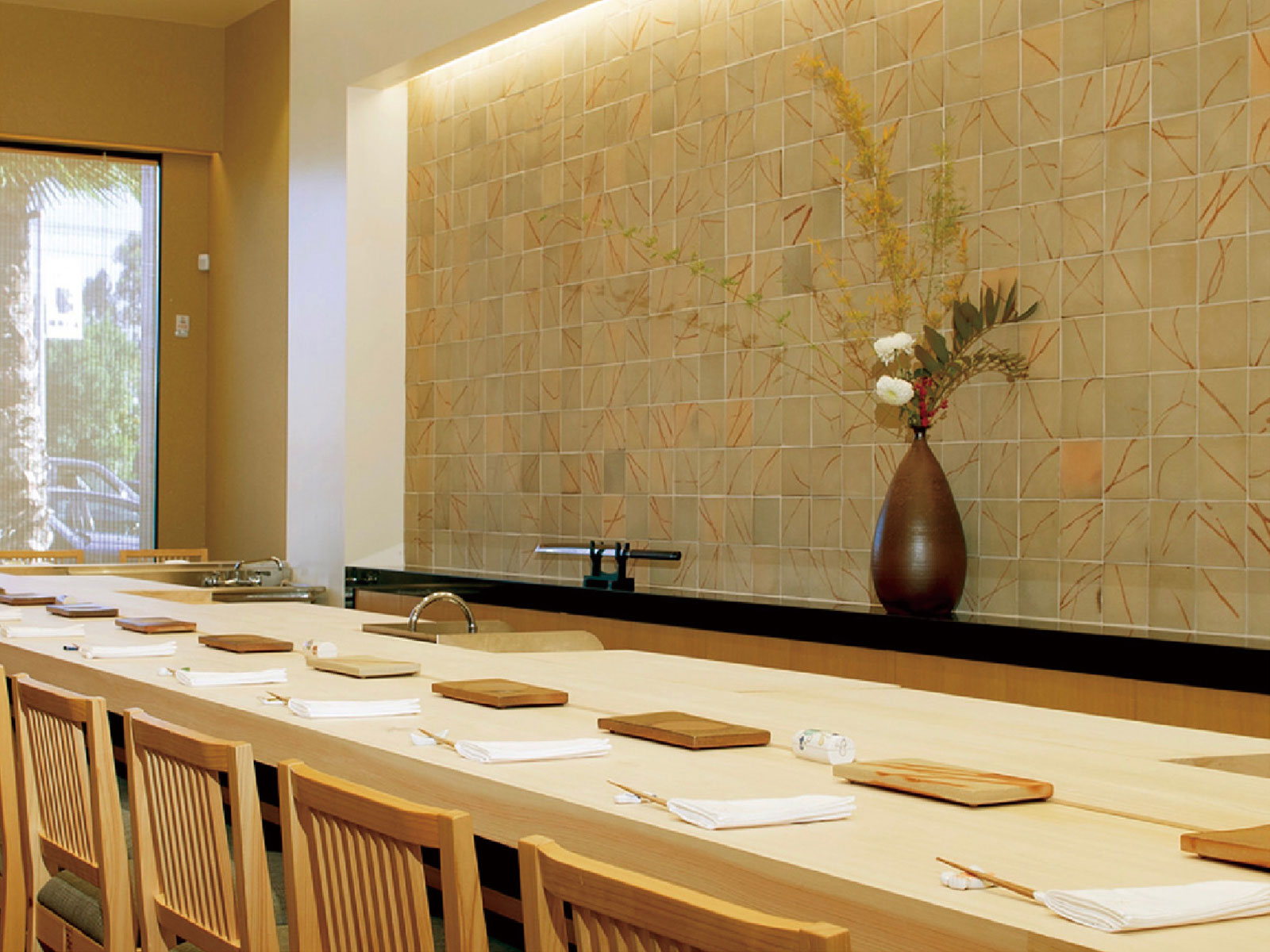 Los Angels
Los Angels
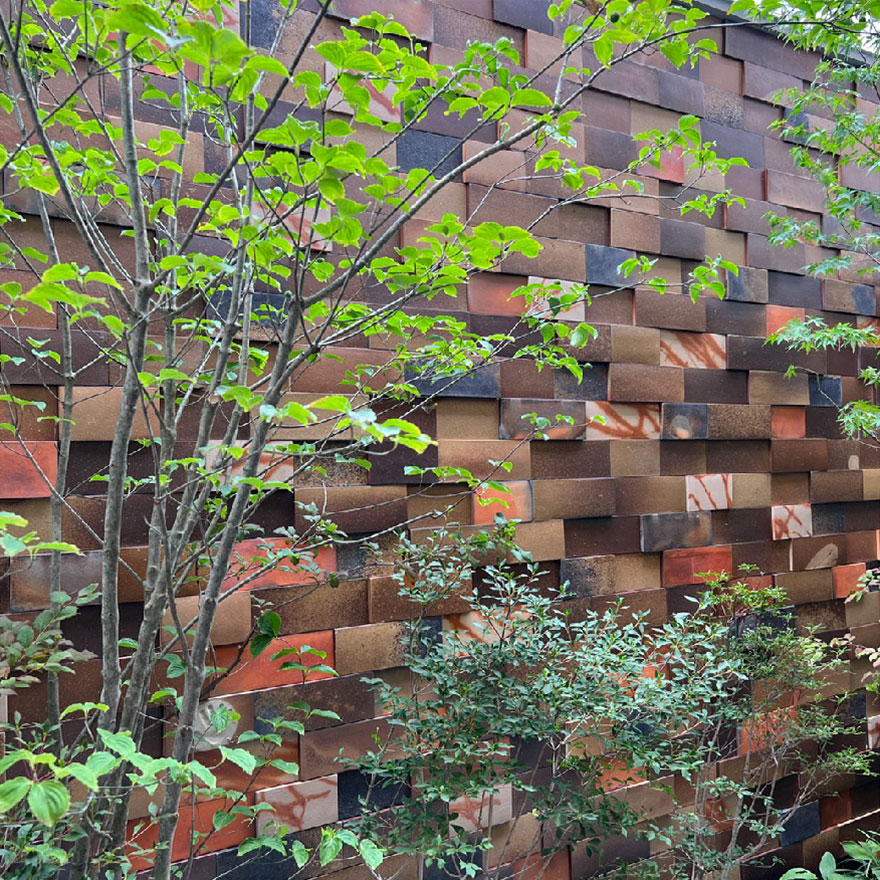 Okayama
Okayama
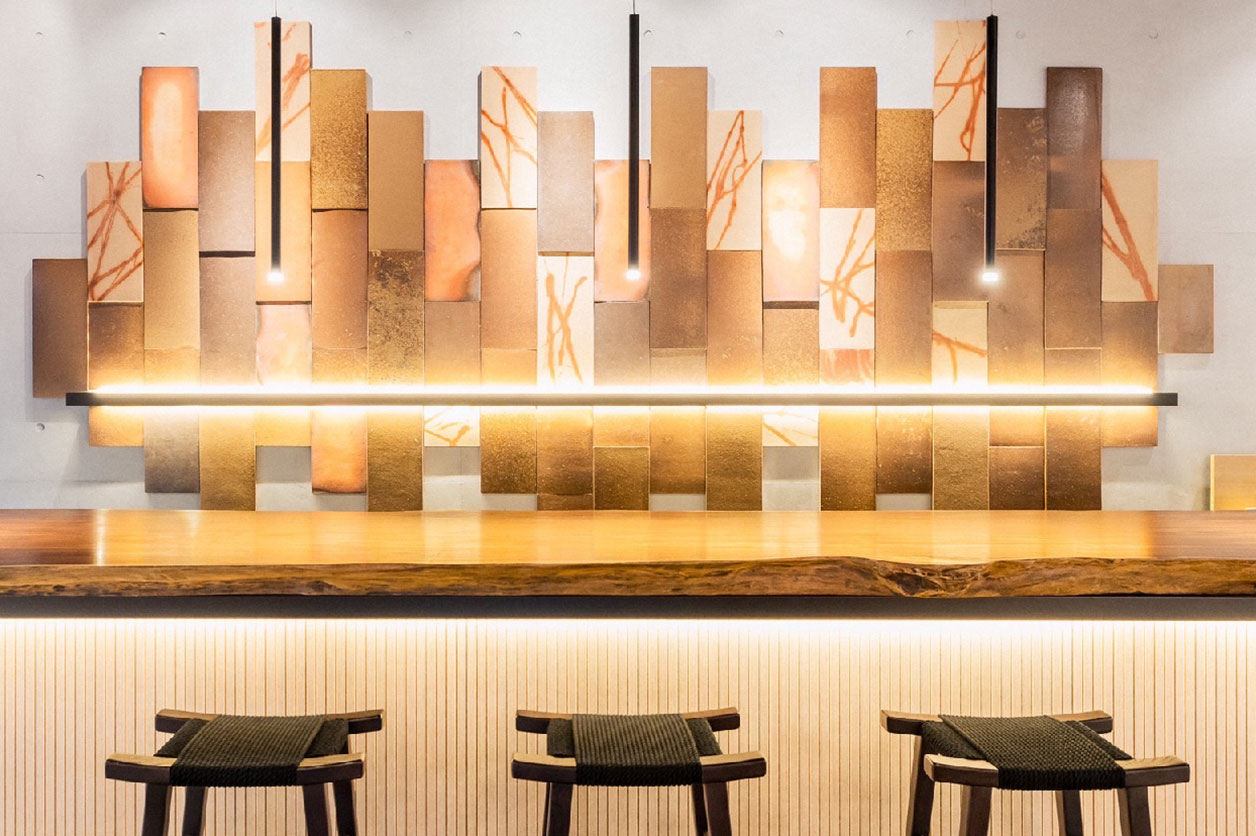 Taipei
Taipei
